Magnetic Field And Field Lines
Key Notes:
Definition:
A magnetic field is a region around a magnet or a current-carrying conductor in which magnetic forces can be experienced. Magnetic field lines are the imaginary lines used to represent the direction and strength of this field.
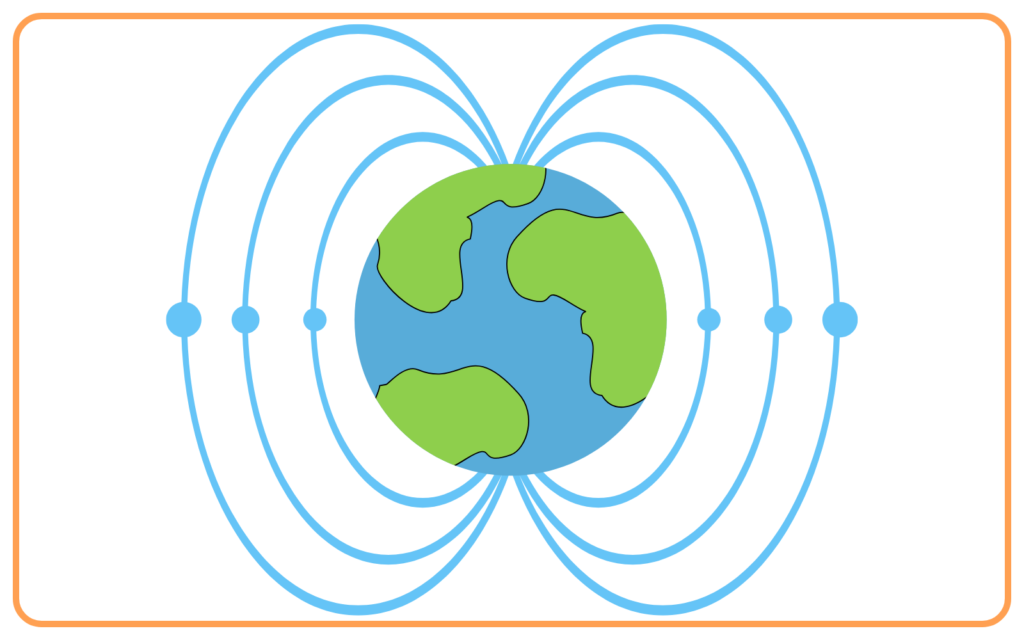
Importance:
Magnetic fields are fundamental in understanding the behavior of magnetic materials, electric currents, and the functioning of devices like electric motors, transformers, and compasses.
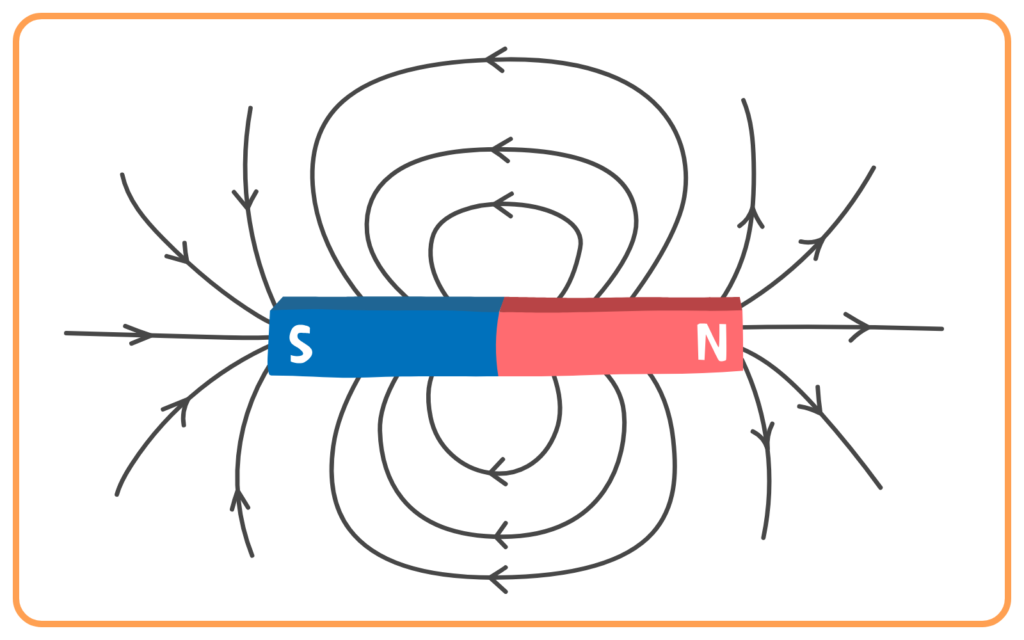
Magnetic Field Lines:
- Magnetic field lines are continuous curves that represent the direction of the magnetic field.
- The density of the lines shows the strength of the magnetic field. A higher density means a stronger field.
Properties of Magnetic Field Lines:
- Magnetic field lines never intersect.
- They are continuous and form closed loops.
- They move from the north pole to the south pole outside a magnet and from south pole to north pole inside the magnet.
- They are more closely spaced where the magnetic field is stronger.
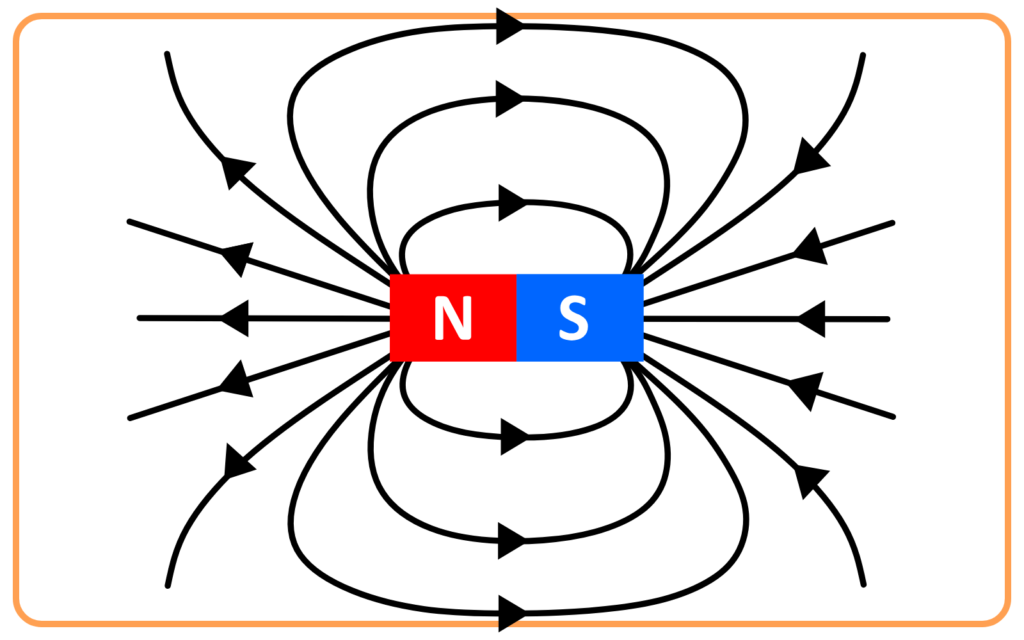
Types of Magnetic Fields:
- Magnetic Field of a Bar Magnet:
- The magnetic field around a bar magnet forms a pattern of curves with the lines emerging from the north pole and entering the south pole.
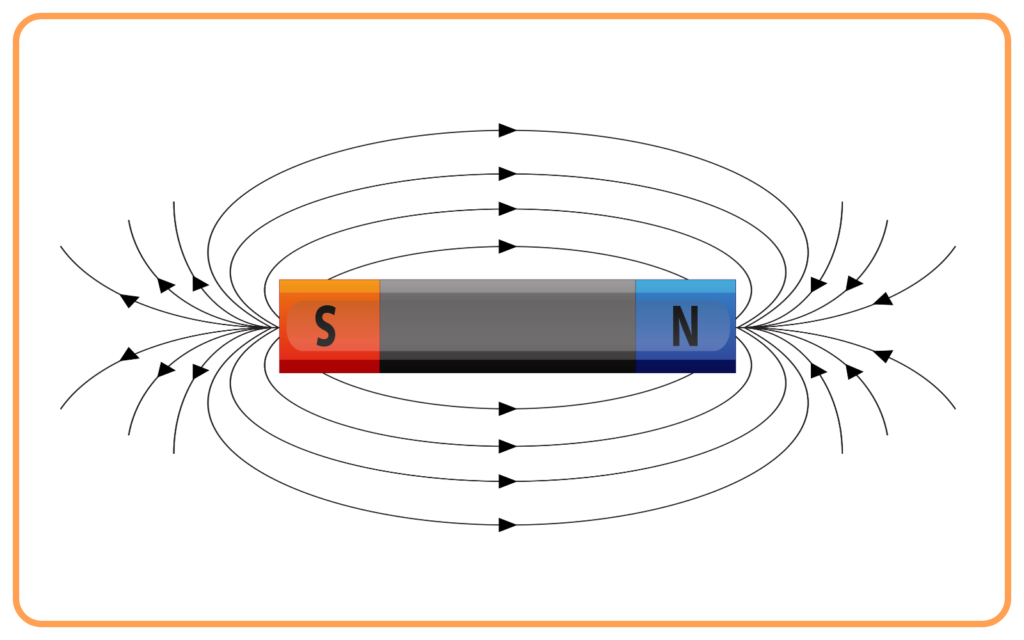
- Magnetic Field of a Current-Carrying Conductor:
- A straight conductor carrying a current produces a circular magnetic field around it. The direction of the magnetic field can be determined using the right-hand thumb rule.
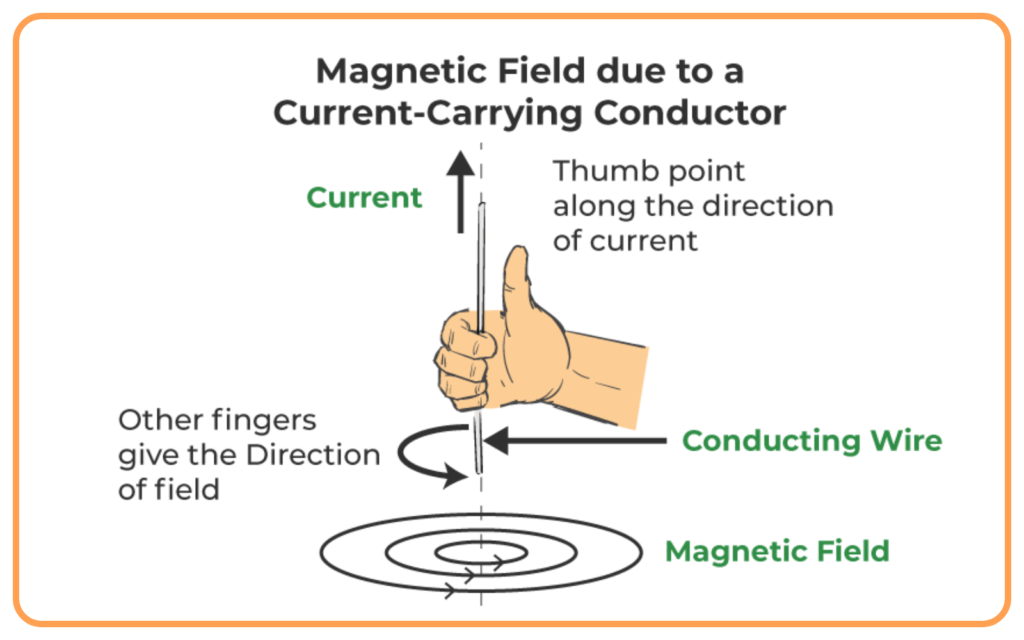
- Magnetic Field of a Solenoid:
- A solenoid (a coil of wire) produces a uniform magnetic field similar to that of a bar magnet, with well-defined north and south poles.
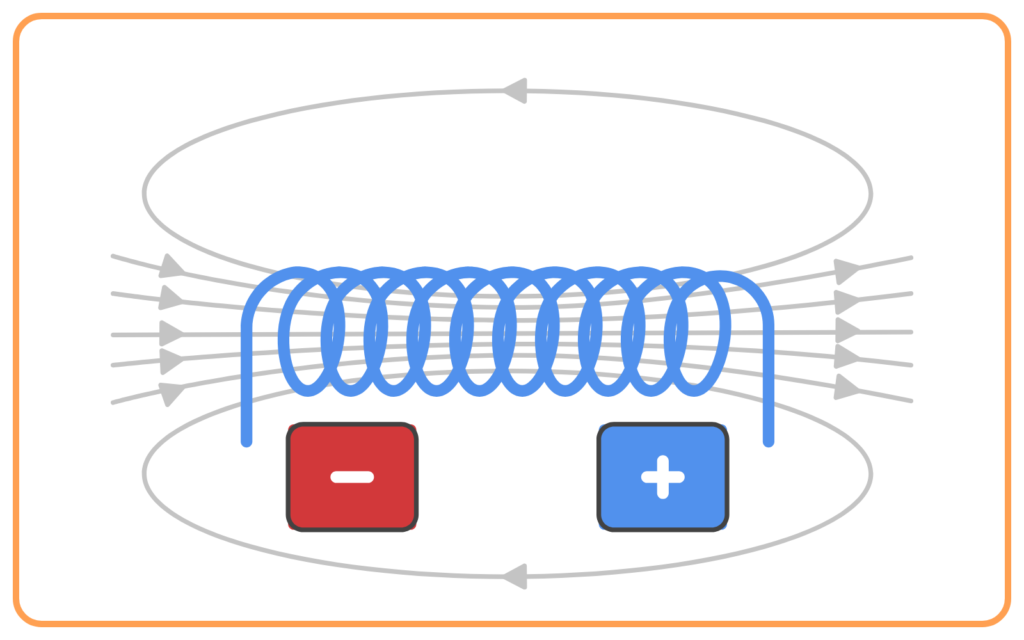
Right-Hand Thumb Rule (For Current-Carrying Conductor):
- Hold the conductor with your right hand such that your thumb points in the direction of current.
- The direction in which your fingers curl gives the direction of the magnetic field around the conductor.

Earth’s Magnetic Field:
- The Earth behaves like a giant magnet, with its magnetic poles near the geographic poles.

- The magnetic compass works because of Earth’s magnetic field, with the needle aligning with Earth’s magnetic field lines.
Applications:
- Compass: Used for navigation by aligning with Earth’s magnetic field.
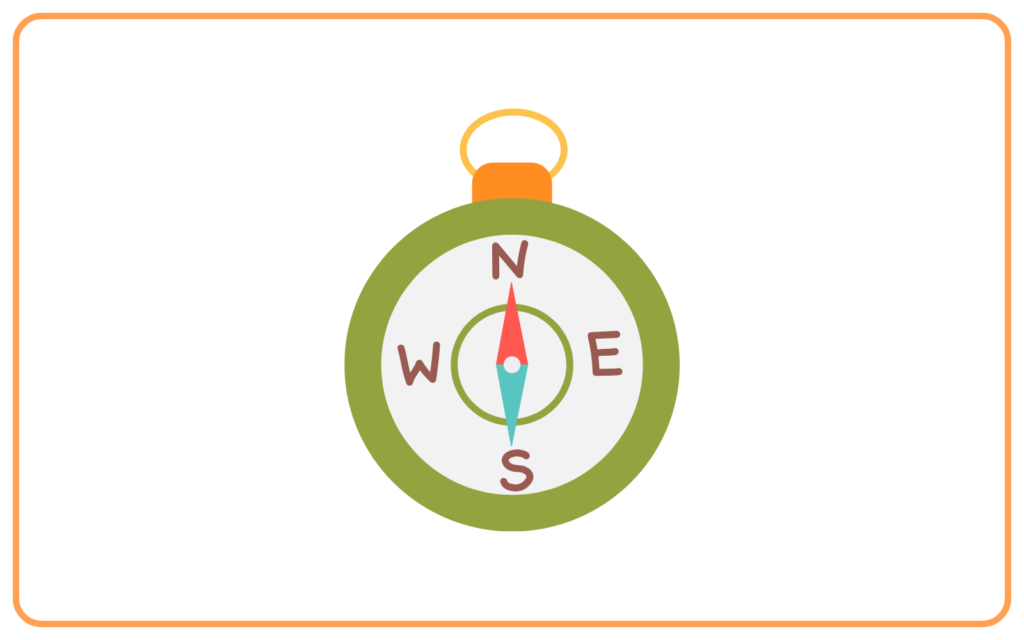
- Electric Motors: Uses the interaction of magnetic fields and current to produce motion.
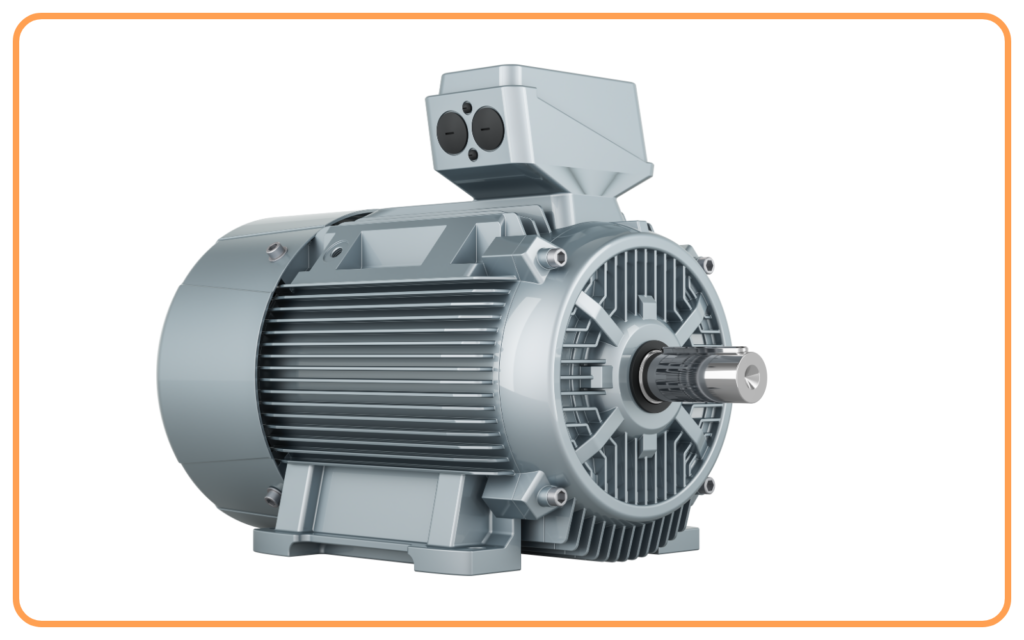
- Magnetic Levitation: Utilizes magnetic fields to lift and move objects without contact.
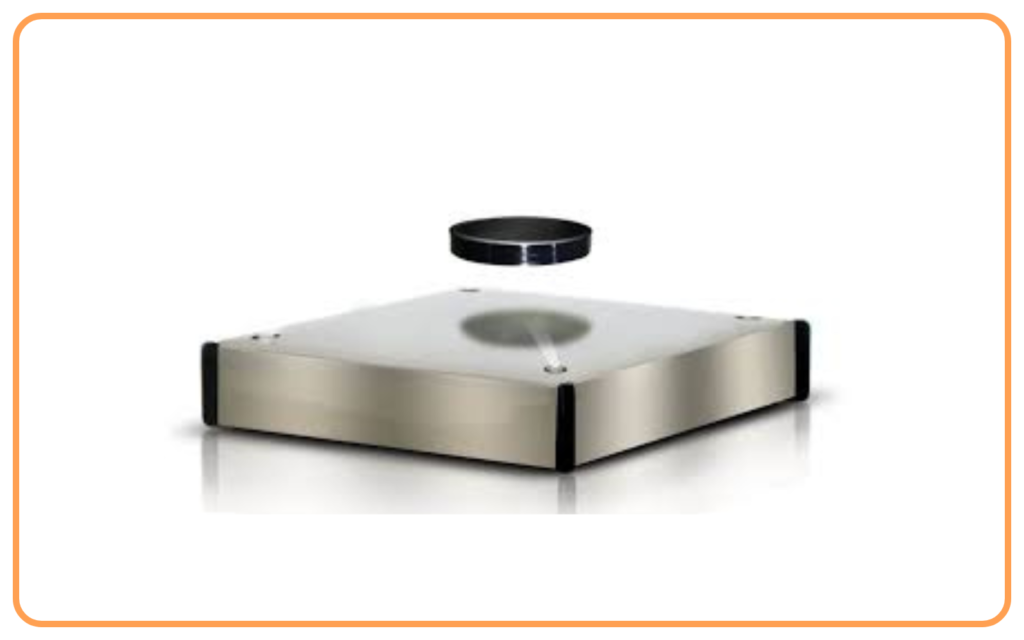
Magnetic Field Strength (B):
- The strength of the magnetic field is measured in Tesla (T).
- The magnetic field strength is proportional to the current in the wire and inversely proportional to the distance from the wire.
Let’s practice!

